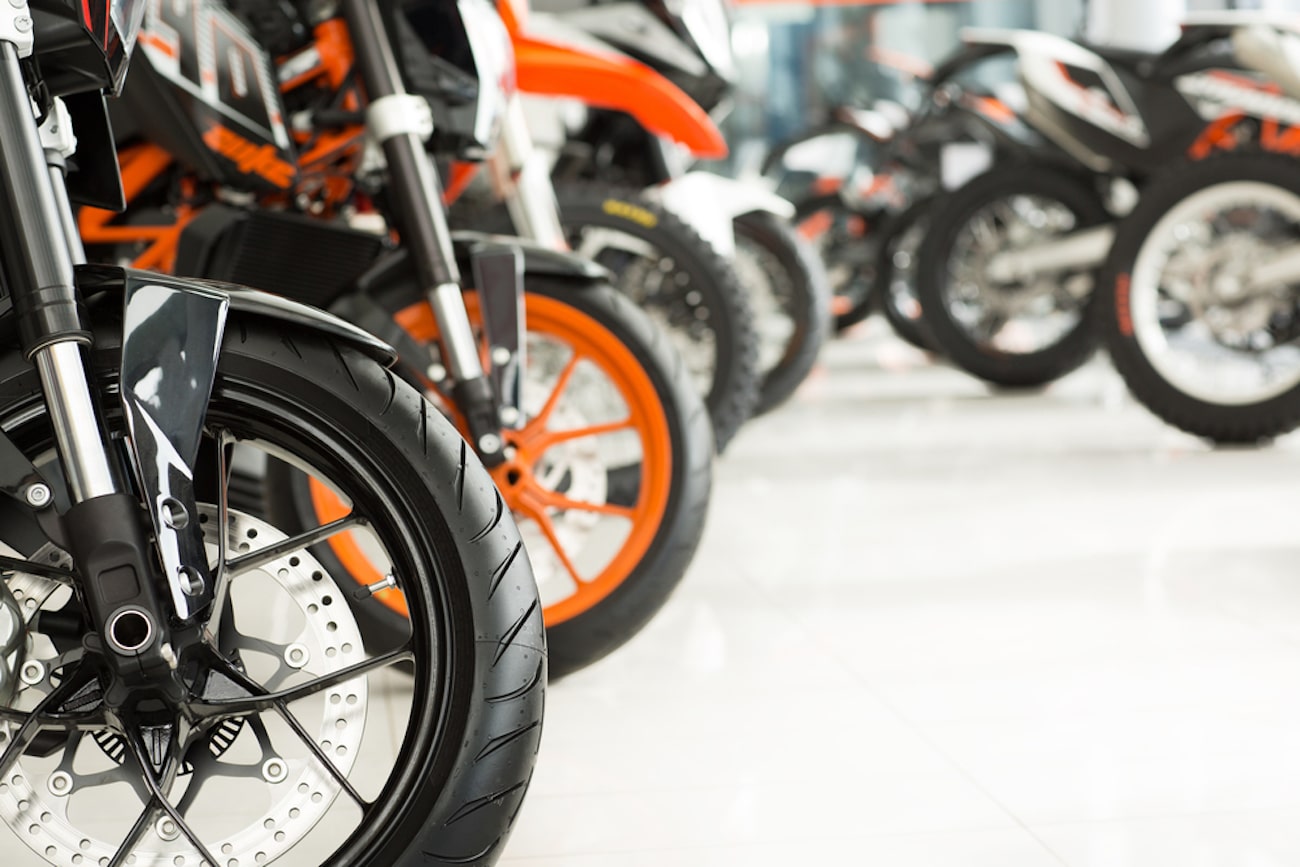
The Ultimate Guide to Motorcycle Group Rider Safety
Whether an organized rally or a thrown-together Sunday ride, there’s nothing quite like cruising the streets with a bunch of buddies. Group riding is an awesome way to take an ordinarily autonomous activity and turn it into something you can share with your closest friends while seeing the country, raising money for a cause or simply logging some miles on your hog.
There are a few logistics that can get in the way of a fun and safe group ride, but nothing that should keep you from joining the pack. We’re here to address them all so you face zero roadblocks along the way.
Why Ride as a Pack?
You’ve probably heard of the Sturgis Motorcycle Rally, the 10-day run that draws over 700,000 riders to South Dakota each year and has been going strong for over eight decades. And then there’s Daytona Bike Week, pulling some 500,000 bikers down to Daytona Beach every March. Hundreds of smaller but no less exciting rallies are routinely held throughout the country, getting even typically solo riders out into the crowd. Why do bikers love to gather and cruise as a flock? Here are some of the top reasons:
- The Social Factor—Most motorcycle rallies involve some form of social interaction that goes beyond talking to one another through a motorcycle communication system. From bike shows where you can gawk at one another’s rigs to stopping for lunch or a drink, it’s pretty tough to come away from a rally without making a few personal connections with like-minded riders along the way. Rallies are a great way for young and veteran riders alike to make friends and get more involved in the community.

- The Charity Factor—Charity rides are a big deal throughout the country, supporting all sorts of causes, especially veterans’ groups, research foundations, organizations supporting children and local clubs. In a charity ride, the rider generally pays a fee to enter (it’s usually higher if you have a passenger), which is then donated to the benefiting charity. There’s typically a gathering with food and drinks after the fact. Some incredible charity riding groups to check out include:
- Patriot Guard Riders—Founded in 2005, Patriot Guard Riders is a nonprofit organization that puts together group rides to attend the funerals of members of the military. The group was initially founded to protect mourners against protesters from the Westboro Baptist Church, and members still create an honor guard to shield mourners from harassment.
- Bikers Against Child Abuse (BACA)—Founded 24 years ago, BACA is a charitable motorcycle club with a mission “to create a safer environment for abused children” and to “empower children to not feel afraid of the world in which they live.” The group holds rallies, fundraisers and other events for children’s charities that protect kids against sexual, physical and emotional abuse.
- Bikers for Autism (BFA)—Bikers for Autism launched in 2012 by a biker who had a family member living with Autism Spectrum Disorder (ASD). Through fundraising events, BFA donates to community programs and initiatives specifically to support children with autism and to raise awareness.
- The Safety Factor—When you closely follow safety recommendations, group riding can add an extra layer of precaution to your typical mounted adventure, especially when you have a solid communication system in place. For example, those at the head of the pack can alert others in the back of certain roadway hazards—holes, bumps, loose gravel, etc. It can also help novices learn from seasoned riders.
- The Bonding Factor—We’ve all heard those epic tales of three and four generations of riders taking life-changing, long-distance cruises. Nothing brings together a group of people quite like mounting the back of a bike, especially when the point is to have a big adventure or see the country. This is one bonding activity you’ll never forget!
- The Pride Factor—Think of a big, group rally as a club meeting for people who ride. The idea is to amp each other up and show the community how much you love the activity. It’s also important for helping to show those in your area that riders are a peaceful, positive group often looking to enhance the community and to help preserve riding as a fun, all-American pastime.

Tips for Safe Group Riding
Like anything in life, a little preparation goes a long way when you’re gearing up for a big ride. The fact of the matter is that safe rallies rely on everyone being on the same page and the entire group being properly prepared. Moving as a flock takes more consideration of others than solo riding, and that fact cannot be overlooked before or during your rally.
- Meet Beforehand—A pre-ride meeting with all members of the group is vital for a variety of factors, from mapping out your route to going over any local laws or observances. Make sure the entire group knows the exact route so that, should someone make a wrong turn, they’ll be able to get back on course easily. Additionally, meeting beforehand will help you determine different skill levels, so you can figure out where to position everyone. Your riding order should include:
- A lead rider at the front of the pack who acts as the leader in every way, both physically leading the group and keeping everyone clued in to what’s ahead. The lead rider should pass along info regarding traffic, bumps, rain, etc. Select an experienced, confident rider to serve as lead rider of your group.
- A sweep rider at the back to set the pace for the group and to ensure that you maintain a safe distance from the rest of traffic. Both the lead and sweep riders should have a lot of experience in group riding. Wider bikes, including trikes and motorcycles with sidecars, should be placed at the back of the group.

- Invest in Communication—There is simply no substitute for Cardo Systems’ devices, which seamlessly connect riders, keeping them closely in touch throughout the ride. Our systems use cutting-edge Dynamic Mesh Communication (DMC) technology which ensures high-quality, long-distance reception among groups. Plus, they also connect to your phone, so you can answer calls, place calls, listen to your navigation or jam out to music and podcasts. Effortlessly connecting between two and 15 riders, the PACKTALK SLIM is a fantastic choice for group riding, as it keeps the entire crew alert of what’s happening ahead, from traffic jams to roadblocks to cool sights.
- Know Your Hand Signals—Even though we now have communication technology that has revolutionized how we ride, it’s still important to know the specific hand signals for group riding. Signals exist for alerting others to stop, slow down, speed up, follow, pull off and others. These hand signals are often used to keep the group in unison and can alert others to get in single- or double-file formation or to stop for food or fuel.
- Get a Pre-Ride Tune-Up—You should always be in the habit of inspecting your bike before you shove off, even if you’re just planning to ride for an hour or so. But getting a tune-up before a group ride is especially important to ensure that everyone has a safe, enjoyable ride. After all, you wouldn’t want a dozen of your fellow riders to have to stop in the middle of the ride to help you deal with a preventable issue. Give your bike a complete T-CLOCS inspection and, if it’s been a while, have a mechanic look it over.
- Show Up Ready—Although group riders are generally very accommodating, try your best not to hold up the group because you need to get gas, go to the bathroom or eat something. Always arrive at the designated meeting point with a full tank of gas, a full belly and an empty bladder so you can get rolling without any hold-ups.
- Keep it Small—In the motorcycle community, a small ride of four or five participants can quickly grow massive when riders tell their friends. But, for the sake of safety, sometimes it’s necessary to keep things small and lowkey. Try to keep the number of bikes under eight, especially if you’re including less experienced riders. For large rallies, small group formations are necessary to keep everything safe and cohesive.
- Get in Formation—Make sure to think a lot about your group riding formation, keeping in mind your particular mix of participants, before you depart. We’ll cover this topic in-depth below, so you have a better idea of where to start. If possible, practice and perfect your formation together on less-trafficked back roads before taking over a large freeway or a main thoroughfare with heavy traffic.
- Don’t Try to Show Off—This is perhaps one of the most important pieces of safety advice for any first-time group ride participant: don’t be a showboat. Taking risks, experimenting or pushing yourself beyond your skill level can put others in danger in this scenario. If you fall to the back or behind the pack, don’t try to race your way to the front. Sit back and enjoy the ride without drawing attention to yourself.
- Be Prepared for Anything—Make sure that at least one member of your group has a full-scale emergency kit on hand, complete with flares, a first-aid kit, a fire extinguisher, spare parts and a toolkit. Emergency rain ponchos, a solar-powered phone charger and a bit of cash can go a long way, too, especially if you’re on a long-distance ride or find yourself off the beaten path.
Proper Group Riding Formation
Coming up with a strong group riding formation is vital to safety when riding as a pack. Because you need to ride tight but also provide one another and your fellow motorists with plenty of room, it can be tough to get the formation right. By and large, most riding experts agree that the staggered formation—where riders are staggered rather than single-file—is the safest option when biking in a group.

In this formation, the lead rider stays on the left side of the lane, while the next driver rides at about a one-second distance behind but staggered a bit to the right. Those on the same side of the road—that is, every other rider—should have a two-second distance in between them. The pattern repeats until you reach the end of the group.
Why is staggered better than single- or double-file? It’s all about giving each other the room to make corrections, avoid hazards and enjoy the ride without interfering with the greater flow of traffic. When riders need to pass a vehicle ahead, they can do it one-by-one with the lead drier first passing and the following drivers taking turns, maintaining a safe gap.
Of course, there are some situations where single-file is necessary, such as when there is construction or an ongoing hazard in the road. Side-by-side or double-file formations are not recommended because they don’t give riders enough room to react to hazards and, in an event where one rider must quickly react, handlebars could become entangled.

Gearing Up for an Epic Group Ride
Thinking about taking the plunge and joining the pack? We’re sure it’ll change the way you think about riding and help you get the most out of the open road. As long as you’ve got a solid plan in place and have your Cardo Systems’ communication installed and ready to go, you can count on your next group ride running smoothly no matter what!
